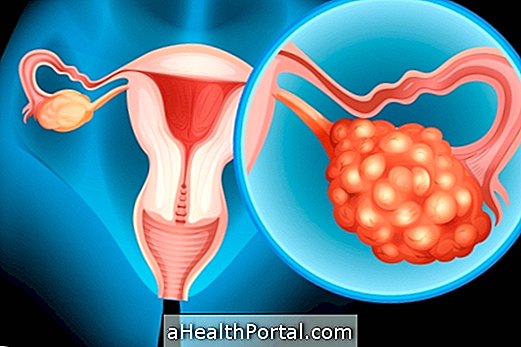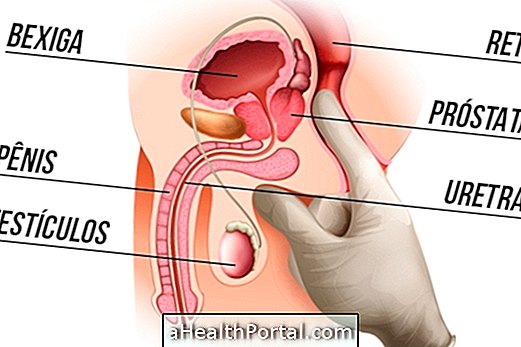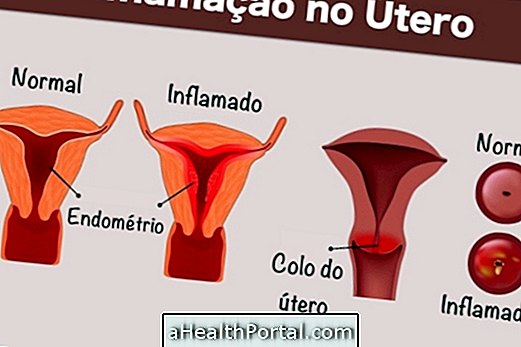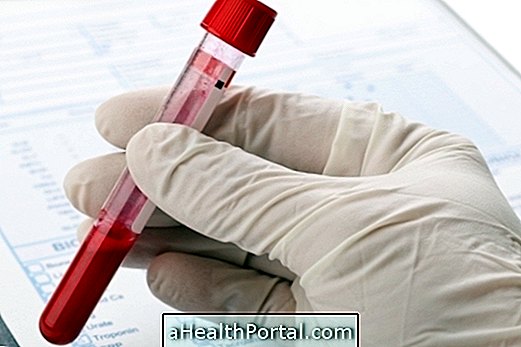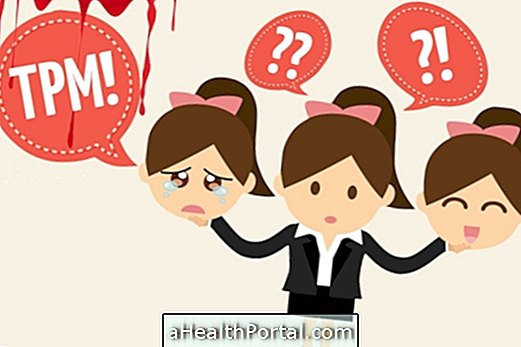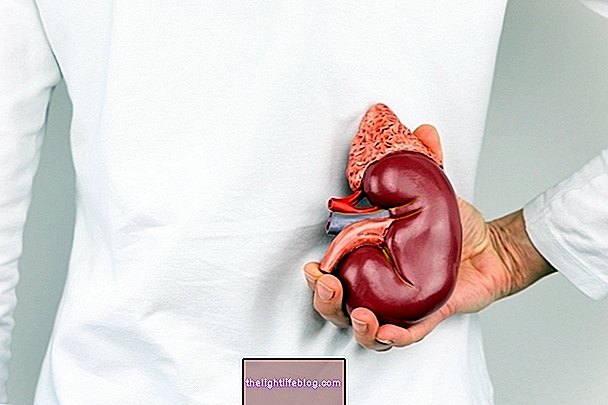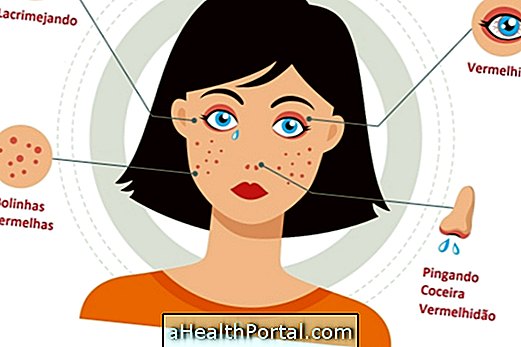Pain in the vagina is common to occur and usually does not mean anything very serious. Because of the various causes, as soon as the pain begins, attention should be paid to some of the symptoms, such as pain or burning when you urinate, redness in the intima, swollen vagina, presence of wounds, lumps or warts, and menstrual bleeding . That way, as soon as the first symptoms appear, you should go to the gynecologist.
Even in pregnancy, pain in the vagina is common and poses no risk to the mother or the baby. It usually arises from the third trimester, which is when the baby, who is already practically formed, begins to put pressure on the mother's organs, mainly in the uterus, causing pain. See what happens in the third trimester of pregnancy.

1. Wear tight clothing
The use of tight clothing is usually the main cause of pain in the vagina. This is because very tight clothing and synthetic fabric prevent air from flowing into the woman's intimate region, increasing the temperature and humidity of the place, which favors the proliferation of fungi and bacteria. The consequence of the use of tight clothing is perceived when the woman presents the first symptoms of a urinary or vaginal infection, which are pain and burning when urinating.
What to do: You should go to the gynecologist or urologist for the cause to be determined and thus treatment be established. It is advisable to wear lighter, well-ventilated clothes that are not of synthetic fabric, besides opting for cotton panties. Sleeping without panties is a good alternative, as it prevents the region from being so much stuffy.
2. Urinary tract infections
Women have a high chance of having more than one urinary tract infection during their lifetime. This is because the female urethra is short and the distance between the vagina and the anus is small, which favors the migration and proliferation of fungi and bacteria. Urinary infections usually happen when there is no proper hygiene of the intimate region or with the use of tight clothing that causes the vagina to become muffled.
A woman with a urinary tract infection usually has a strong urge to go to the bathroom but can not get rid of too much urine and can also feel pain, burning or itching in the vagina. Learn about the symptoms of urinary tract infection.
What to do: If you notice the first symptoms of a urinary tract infection, you should go to the urologist or gynecologist to identify the causative agent and start treatment. In addition, it is important to pay attention to the hygiene of the intimate region. Treatment is usually done with antibiotics, such as amoxicillin or ciprofloxacin, for example.
Some natural remedies may help prevent and treat urinary tract infection, but do not exclude the use of antibiotics. Learn more about home treatment for urinary tract infection.

3. Allergic reactions
Some women have increased sensitivity to some products, such as soap, fabric softener used to wash panties, absorbent, toilet paper or some type of condom. Allergic reactions can be noted from the swelling, redness, itching, pain or burning in the vagina.
What to do: It is important to identify what causes the allergy and avoid using it. The gynecologist may indicate the use of some medication, such as anti-inflammatory ointments, which should be used in the region that has been sensitized.
4. Sexually transmitted diseases
Sexually transmitted diseases, or STDs, are diseases caused by microorganisms and can happen through unprotected intimate contact and when you have more than one partner in the same time period. STDs are manifested by redness, small wounds, lumps or warts in the intima, burning on urination, vaginal discharge, and pain in the vagina. Find out what the main symptoms of STDs are in women.
What to do: In the presence of symptoms that are indicative of STDs, you should go to the gynecologist to have the diagnosis confirmed by evaluating the symptoms or observing the genitals and initiating appropriate treatment. Usually the treatment is done with the use of antibiotics, antifungals or antivirals depending on the microorganism that causes the disease.
Although some STDs are curable with treatment, it is important to use a condom in sexual intercourse and avoid intimate contact with more than one partner. Learn all about STDs.

5. Presence of cysts
Some cysts can alter the anatomy of the vagina and lead to pain, such as the cyst in the ovary, which is a fluid-filled pouch that forms in or around the ovary. In addition to the cyst in the ovary, some cysts in the vagina can also cause pain, such as Bartholin's cyst and Skene's cyst, which are cysts formed in glands that are located in the vagina. Learn more about Bartholin's cyst and inflammation in the Skene gland.
What to do: If you notice vaginal bleeding outside the menstrual period, pain during intimate contact, difficulty getting pregnant, delayed menstruation or pain in the vagina, you should go to the gynecologist because it may be a cyst.
The treatment indicated by the doctor varies according to the size of the cyst, and can be recommended from the use of birth control pills to the indication of surgery to remove the cyst or uterus. Learn how to identify and treat the cyst in the ovary.
6. Vaginal dryness
Dryness of the vagina usually occurs by decreasing the production of estrogen, which is a female hormone, more commonly occurring in menopause. When there is little mucus production, the woman may experience pains in the vagina, usually during intercourse.
What to do: To reduce the discomfort caused by the dry vagina, lubricants may be used to facilitate sexual intercourse, to use vaginal moisturizers or even to perform hormonal replacement according to medical advice.
7. Vaginismus
The pain and extreme difficulty of penetration of the vagina can be vaginismus, a rare disease but of little public knowledge, that can be caused by physical factors, due to genital or psychological diseases, that can involve sexual abuse, traumatic birth or surgeries, for example.
What to do: To know if you really have vaginismus, a woman should go to the gynecologist and seek guidance, because there is treatment, which can be done with medicines and therapies that can help improve intimate contact. Learn about other symptoms, causes and treatments for vaginismus.
When to go to the doctor
It is important to go to the gynecologist when the pain in the vagina is recurrent and when you experience any of the following symptoms:
- Pain or burning when urinating;
- Swollen vagina;
- Redness;
- Itching;
- Appearance of wounds, warts, or lump in the vagina;
- Bleeding out of the menstrual period.
In addition to going to the doctor, it is important to always perform good hygiene of the intimate region and avoid wearing warm clothing.
